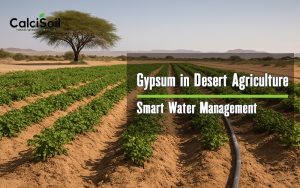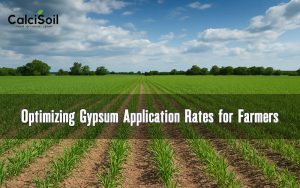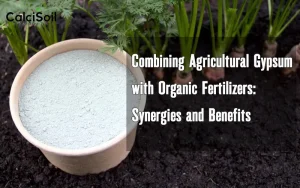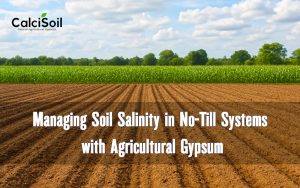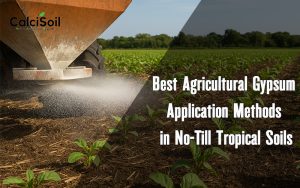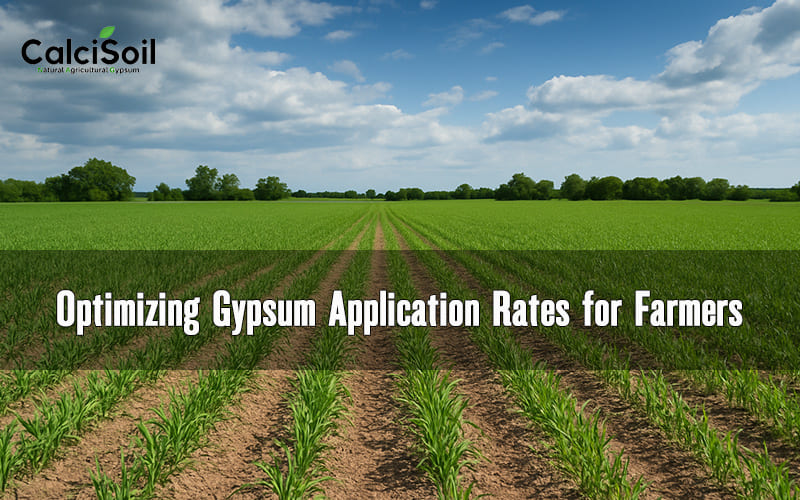
Gypsum Application Rates: Science-Based Recommendations for Farmers
Applying agricultural gypsum can deliver powerful improvements in soil structure, nutrient balance, and water infiltration. But like any soil amendment, its effectiveness depends on using the right amount. Too little gypsum may fail to solve soil problems, while too much can be wasteful or even counterproductive. By relying on soil science and practical field data, farmers can optimize their gypsum application rates to achieve the greatest return on investment and protect long-term soil health.
Why Application Rates Matter
Every soil type responds differently to gypsum fertilizer. Clay-heavy soils often need higher amounts to break up compaction, while sandy soils may require less. Similarly, saline or sodic soils often need substantial gypsum inputs to displace sodium and restore structure. Without tailoring rates to these conditions, farmers risk under-treating or over-applying. Optimized rates ensure that the investment in gypsum translates into measurable gains in crop performance and soil quality.
The Role of Soil Testing
The foundation of any gypsum application plan is a comprehensive soil test. These tests measure pH, sodium adsorption ratio (SAR), exchangeable sodium percentage (ESP), and calcium levels—all of which influence gypsum needs. For example, fields with an ESP above 15% typically require higher application rates to correct sodicity. By establishing these baseline numbers, farmers can calculate gypsum needs accurately rather than guessing. Soil testing also prevents unnecessary costs and protects against nutrient imbalances.
Recommended Rates Based on Soil Conditions
General recommendations often range from 0.5 to 2 tons per acre, but the exact figure should depend on soil conditions. Sodic soils may require even higher applications, sometimes 3–5 tons per acre, applied gradually over multiple years. In contrast, farmers using gypsum primarily to supply calcium and sulfur in balanced soils may benefit from lower rates of 0.25 to 0.5 tons per acre. Tailoring applications to goals—whether soil reclamation or nutrient supplementation—helps ensure efficiency.
Application Timing and Frequency
When to apply gypsum is just as important as how much. Many experts suggest applying gypsum in the fall to allow winter precipitation to move calcium deeper into the profile. In irrigated systems, application before planting ensures that irrigation water aids gypsum movement. Frequency also varies: some farmers apply annually at lower rates, while others prefer a larger application every 2–3 years. Long-term tracking of soil test results helps determine whether reapplication is necessary.
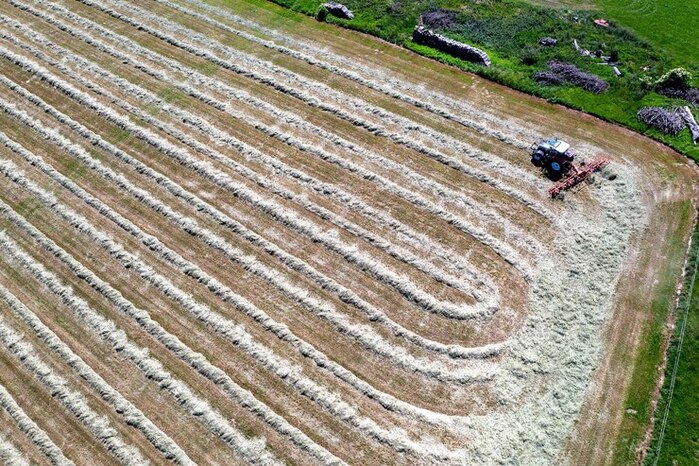
Methods of Application
Gypsum fertilizer can be applied in different ways depending on equipment and soil goals. Broadcasting is the most common method, allowing uniform coverage. For soils with severe sodicity, incorporation into the top 2–4 inches can speed up the chemical reaction. In no-till or reduced-tillage systems, surface application works effectively as rainfall or irrigation moves gypsum downward over time. Regardless of method, even distribution is key to maximizing results.
Economic Considerations
Farmers often worry about the cost of gypsum applications, especially at higher rates. However, the true cost must be compared against the potential benefits: higher yields, improved water-use efficiency, reduced fertilizer losses, and better long-term soil structure. Research shows that in many cases, gypsum applications pay for themselves within two to three years. Using science-based rates prevents both overspending and underperforming.
Environmental Impacts of Correct Rates
Optimizing gypsum use also carries environmental advantages. Properly applied gypsum reduces phosphorus runoff, protecting nearby waterways from eutrophication. By enhancing infiltration, it lowers the risk of erosion and improves water retention in the soil profile. On the other hand, over-application can lead to unnecessary resource use and carbon emissions from transport and spreading. Balanced, data-driven applications provide both agronomic and ecological benefits.
Conclusion: Balancing Science and Practice
For gypsum fertilizer to reach its full potential, farmers need more than a rule of thumb—they need science-based recommendations tailored to their soils. Regular testing, careful adjustment of rates, and monitoring outcomes ensure that gypsum applications remain effective, economical, and sustainable. By optimizing rates, farmers can unlock the full power of agricultural gypsum, building stronger soils and more productive fields for the future.

